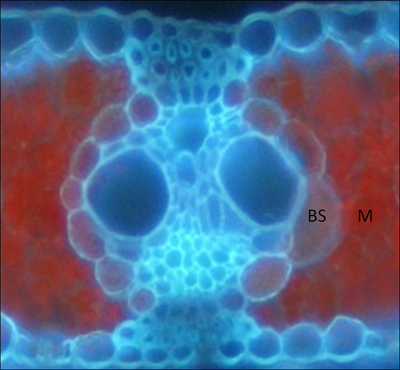Late in January researchers at Cornell University announced the discovery of a gene they have called Scarecrow. The gene controls the photosynthesis structures found in plant leaves. Known as Kranz anatomy, this novel leaf anatomical structure provides plants which have it considerable advantage over those that don’t.
To understand the implications you need to know a little more about plant anatomy and physiology. Plants use photosynthesis to harvest the energy from sunlight and CO2 and convert these two into sugar. Plants over time have evolved two different methods of photosynthesis. One is called C3, the predominant method. The other, C4, is an adaptation that gives those plants with it a more efficient production mechanism with the added benefit of being able to better deal with more intense sunlight, high levels of heat, low nitrogen soils and prolonged drought. The C3 photosynthesis mechanism evolved early in Earth’s history when there was much more atmospheric CO2 and less free oxygen. The C4 adaptation came later after C3 plants added considerable amounts of free oxygen to the atmosphere.
C4 plants feature an extra layer of bundle sheath cells encircling the core cells involved in converting sunlight and CO2 into sucrose. And C4 plants, unlike C3 produce no byproduct associated with handling oxygen that needs to be further degraded, making the latter 50% less efficient in making sucrose. And although researchers have understood the difference in the two mechanisms what they didn’t know was the underlying genetics responsible for C4. The discovery of Scarecrow means that scientists through genetic modification can begin to introduce C4 into C3 plants.
Why is this important? Because wheat and rice, two principle food staples are both C3. With 7 billion human mouths to feed today, and projections of population growth to 9.5 billion by mid-century, and with the increasing impact of global warming on weather patterns, the promise of 50% higher crop yields is significant. C4 versions of C3 plants will grow in a hotter, drier world and will need less nitrogen-based fertilizers.
For those who oppose genetic modifications to food crops, this discovery may further spook them. But I am increasingly convinced by the hard science that GMO represents a key strategy for our species as we progress through the 21st century. Without it we will find the limits imposed by changing climate and finite agricultural land a potential death sentence for billions.









